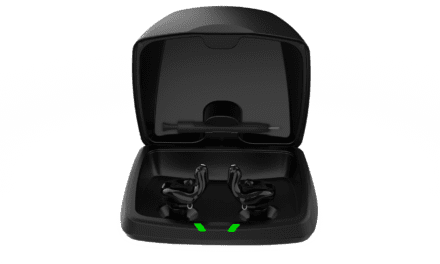New research announced by the Hearing Industries Association (HIA) reveals that 4 out of 5 Americans consider hearing loss serious, but ignoring the problem is more common than you may think. Fewer than 16% of adults ages 20-69 who need a hearing aid use one. That number almost doubles to 30% for adults over age 70 who need a hearing aid but don’t use one, according to the National Institute on Deafness and Other Communication Disorders (NIDCD).1 Overall, an estimated 38 million Americans have a hearing loss.2
Related article: HIA Sends Position Statement to Florida Legislators on SB 700 Bill, Direct Mail Hearing Aids
Good hearing health is essential; it keeps us connected to the ones we love and the activities we enjoy. In recognition of World Hearing Day on March 3, take action to protect your hearing, and reach out to those you care about who may be hesitant to address their hearing loss.
1. If you notice hearing loss, get tested to find out why.
You may have hearing loss that comes with age, or you may have a medical problem that needs immediate attention. You may just have wax in your ears! Regardless of the problem, there is likely a solution to improve your hearing.
2. You may not notice you have hearing loss because it happens gradually.
On average, Americans wait six years to address hearing loss. They may be ignoring some of the signs of early hearing loss: turning up the volume; asking “what?” more often; having trouble hearing children’s or women’s voices; or having trouble differentiating individual voices when a room is loud.
When should you start testing? According to The American Speech-Language-Hearing Association (ASHA), if you are not having hearing loss, you should get tested every 10 years until you turn 50, and every 3 years after that.3
“Like an annual physical, dental or eye exam, a hearing test needs to be part of our routine checkups. Good hearing is a key element of being healthy and an important contributor to our overall quality of life,” said Kate Carr, President of the HIA.
3. You are at risk of losing more than your hearing.
Hearing loss is associated with higher rates of depression, dementia, and falls that require hospitalization.4 Even mild hearing loss doubles the risk of dementia, moderate loss triples the risk, and those with severe loss are five times more likely to develop dementia.5
Another problem associated with hearing loss is isolation. COVID has demonstrated how important staying connected is to our happiness and well-being. Now more than ever, hearing well is a priority.
“Good hearing increases social engagement, improves communication, lowers the risk of isolation and depression, and is part of healthy aging,” adds Carr.
4. Hearing aids are far better today than in the past.
Advances in technology have made hearing aids smaller and more sophisticated. Worn in or behind the ears, hearing aids with Bluetooth can stream sound from a phone or TV directly into your ear. New processor technology can help amplify the sounds you want to hear and help mask tinnitus. Some hearing aids can adapt to your habits and environments to improve your hearing experience. Particularly helpful during the pandemic, new innovations enable some hearing aids to help you hear people who are wearing a mask.
5. Better hearing can be affordable.
Like other technology you use daily there is an upfront investment, so to demonstrate the true value, consider the cost per day over the life of the hearing aid. For a few dollars a day, you can stay connected and engaged. The investment on your hearing could even benefit your budget in the future since untreated hearing loss is associated with 46% higher total health care costs over a 10-year period.6
Check your insurance policy to see if hearing health is covered. Veterans can get hearing aids at no cost. While traditional Medicare doesn’t cover hearing health, most Medicare Advantage programs include a hearing benefit.
6. You can manage much of your hearing health from home.
Thanks to advances in telehealth and technology, you can handle many hearing appointments from the comfort of your home. Because of COVID, many Americans are taking advantage of telehealth. HIA research shows 42% of respondents used telehealth in the past year.
Your initial assessment and annual checkups need to be done in person, but if you opt for a hearing aid, many future appointments can be done remotely. Today’s hearing aid apps connect you with your audiologist so adjustments can be made without going into their office.
7. Hearing health is a sign of the times.
Today, people of all ages are using earbuds or headsets. With the pandemic, adults and kids are plugged in for hours at a time for phone calls, meetings, and schoolwork. Pay attention to the volume: Sounds above 85 dB can be harmful. Excessive noise exposure contributes to hearing loss, so protect delicate inner-ear hair cells against excessive noise by wearing protective noise-cancelling headphones or earplugs. Be proactive about your hearing wellness throughout your life.
Carr concluded, “Hearing can be one of those things we take for granted until something happens and then we realize its importance to our lives. The better strategy is to act now, before there is a problem.”
It is easy to take action. Visit betterhearing.org for links to online tests. Better yet, link to a hearing professional near you and schedule an in-person hearing test today.
About Hearing Industries Association (HIA)
HIA is a forum for the companies that manufacture and distribute hearing aids, components, and supplies for the hearing aid industry. HIA’s mission is to be the trusted voice on hearing health care for product innovation, public policy, patient safety, and education. http://www.betterhearing.org
#WorldHearingDay, #HearWellStayVital, and #TestYourHearing
References:
1 Based on calculations by NIDCD Epidemiology and Statistics Program staff using data collected by (1) the National Health Interview Survey (NHIS) annually for number of persons who have ever used a hearing aid [numerator], and (2) periodic NHANES hearing exams for representative samples of the U.S. adult and older adult population [denominator]; these statistics are also used for tracking Healthy People 2010 and 2020 objectives. See also Use of Hearing Aids by Adults with Hearing Loss (chart).
2 Goman, A. Johns Hopkins Cochlear Center for Hearing and Public Health website. How many people have hearing loss in the United States? https://www.jhucochlearcenter.org/how-many-people-have-hearing-loss-unaited-states.html.
3 American Speech-Learning-Hearing Association (ASHA) website. Hearing Screening. https://www.asha.org/public/hearing/hearing-screening/.
4-5 Johns Hopkins Medicine website. The Hidden Risks of Hearing Loss. https://www.hopkinsmedicine.org/health/wellness-and-prevention/the-hidden-risks-of-hearing-loss.
6 Reed NS, Altan A, Deal JA, et al. Trends in health care costs and utilization associated with untreated hearing loss over 10 years. Otolaryngol Head Neck Surg. 2019;145(1):27–34.
Source: HIA






